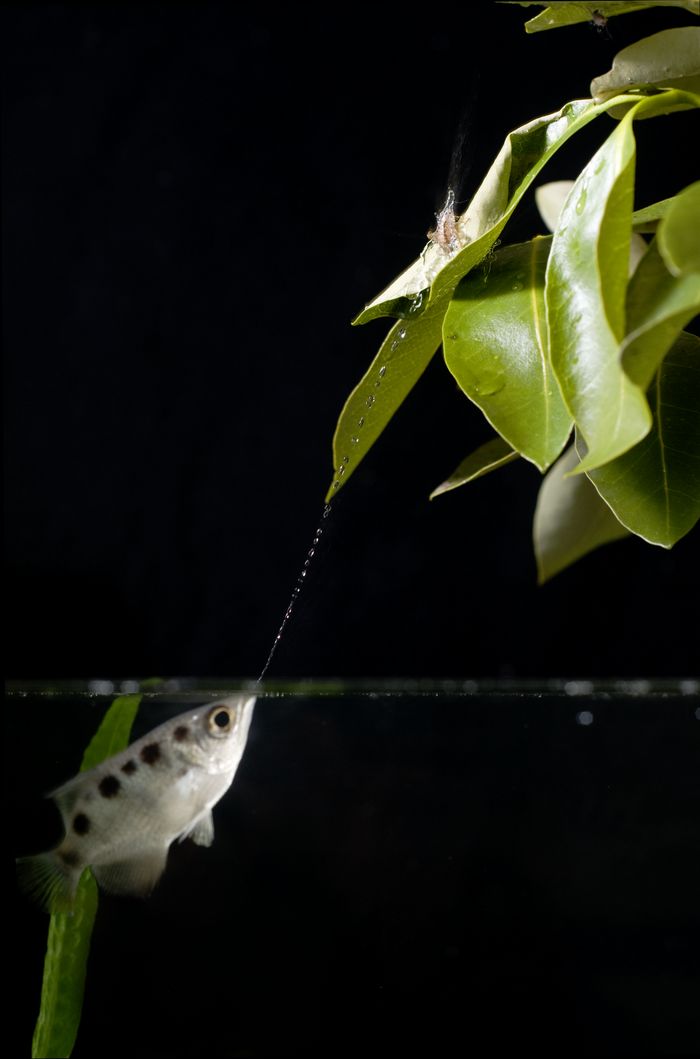Prabhupada, Garden Conversation with Professors, June 24, 1975, Los Angeles: ..Where to find eatables, where to find sex, where to find shelter for sleeping, and how to defense—these circumstances are understood by the animals. There is no need of education. Just like this morning I pointed out. The bird is catching a small fish, “Fut!” He knows where to find out his eatable. And that you cannot do. You also eat fish, but you jump over and take a fish. You cannot do that. But he can do that. He is more expert than you. Yes. In the troubled water, he is flying. He can see a small fish and immediately pick it up. Can you do that? So he is more advanced in civilization. He knows his techniques. He is greater scientist than you. You cannot do this. A vulture goes seven miles up, and he can see where is a dead body. So even amongst the animals there are many expert scientists than our so-called scientists. But what that science will help? That science may help how to eat, how to sleep, how to have sex. That’s all. And that is being done by the animals. It doesn’t require any advanced scientific knowledge. Real scientific knowledge is who is God, to know. Full Conversation

(PhysOrg.com) -- If you have ever looked up from the depths of the ocean, you will understand how difficult it can be to identify objects above the surface.
“Archer Fish Sees Clearly Up and Down”
Creation Evolution Headlines, May 03, 2010 — The archer fish, which lives in mangrove swamps and rivers, is able to spit insects off leaves above the water with remarkable accuracy (09/30/2002, 09/07/2004, 10/10/2006). Scientists have been fascinated by this ability because in order for the fish to calculate the trajectory of its missiles, it needs to take into account both chromatic aberration and refraction from the air-water interface.
Now, scientists at the University of Queensland have determined that the little fish can see up into the air and down into the water clearly at the same time. This enables them to aim at the prey while watching for predators, even though the color and refractive characteristics of the two directions are different.
PhysOrg carried the press release from the May 03, 2010 — The archer fish, which lives in mangrove swamps and rivers, is able to spit insects off leaves above the water with remarkable accuracy (09/30/2002, 09/07/2004, 10/10/2006). Scientists have been fascinated by this ability because in order for the fish to calculate the trajectory of its missiles, it needs to take into account both chromatic aberration and refraction from the air-water interface. Now, scientists at the University of Queensland have determined that the little fish can see up into the air and down into the water clearly at the same time. This enables them to aim at the prey while watching for predators, even though the color and refractive characteristics of the two directions are different.
PhysOrg carried the press release from the University of Queensland, Australia, which said,
“Archerfish spit jets of water with remarkable accuracy at insects as much as a meter or more above the water’s surface, despite the distortion that occurs due to the bending of light as it passes from air to water. They do all this while being attentive to potential predators approaching from above or below” said lead investigator Dr Shelby Temple.
The press release indicated that most vertebrate taxa are known to have differences in color sensitivity across the retina, but this is the first time a functional role has been discovered for the phenomenon. Dr. Temple explained, “The correlation we found between the colour sensitivity of the archerfish eye for ‘looking’ in different directions and the background environment in those different directions indicates that the archerfish eye is highly tuned to differences in the spectral quality of light in different directions.”
The article tried to give an evolutionary explanation for this ability in archerfish and other vertebrates. “As this story shows, when they have specific necessary tasks, animals often come up with remarkable adaptations to help them survive,” said Justin Marshall, a professor at the University and Temple’s supervisor. That, of course, begs the question of how animals come up with adaptations, or whether they are even capable of wanting to come up with them, or knowing that they need to, even if they could. His question-begging only dug in worse when he mixed evolution and design words, and compared evolution to engineering:
“The innovation in design here is called ‘matched filtering’ where the visual system takes into account the environment and, through evolution, adjusts its self [sic] to the outside world. Under water, this world changes more rapidly from top to bottom than it does in air and archerfish have come up with a neat system of accounting for this change and retaining exquisitely tuned vision in every direction at once. This design principle is something we can learn from in our own attempts at engineering.”
Would this reasoning be invertible? If human engineers were to copy the design principles in the archerfish, would it be called evolution?
Student to Professor: You have just failed your test on Darwinism. Bad prof. As punishment, you must wear this dunce cap and write on the chalkboard fifty times, “Evolution is not engineering, and vice versa.”
By now long-time readers have honed their ability to spot the tricks evolutionists use to cover their miracles. Animals “come up with” adaptations. An “innovation in design” occurs. The innovation is called “matched filtering”. The visual system “takes into account the environment, and through evolution, adjusts itself”. Archerfish have “come up with a neat system” that amounts to a “design principle”. See? There’s no such thing as a consistent Darwinist. Everybody is a supernaturalist. Evolutionists really do believe in intelligent design. Force them to admit it.







Speak Your Mind